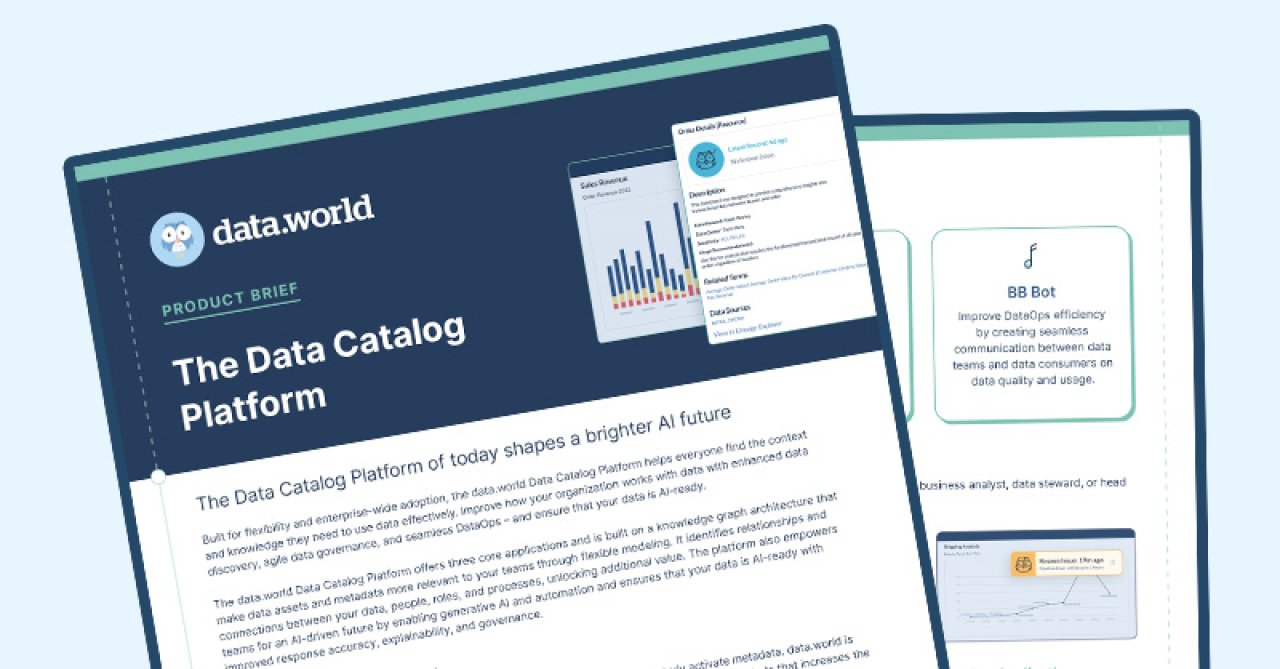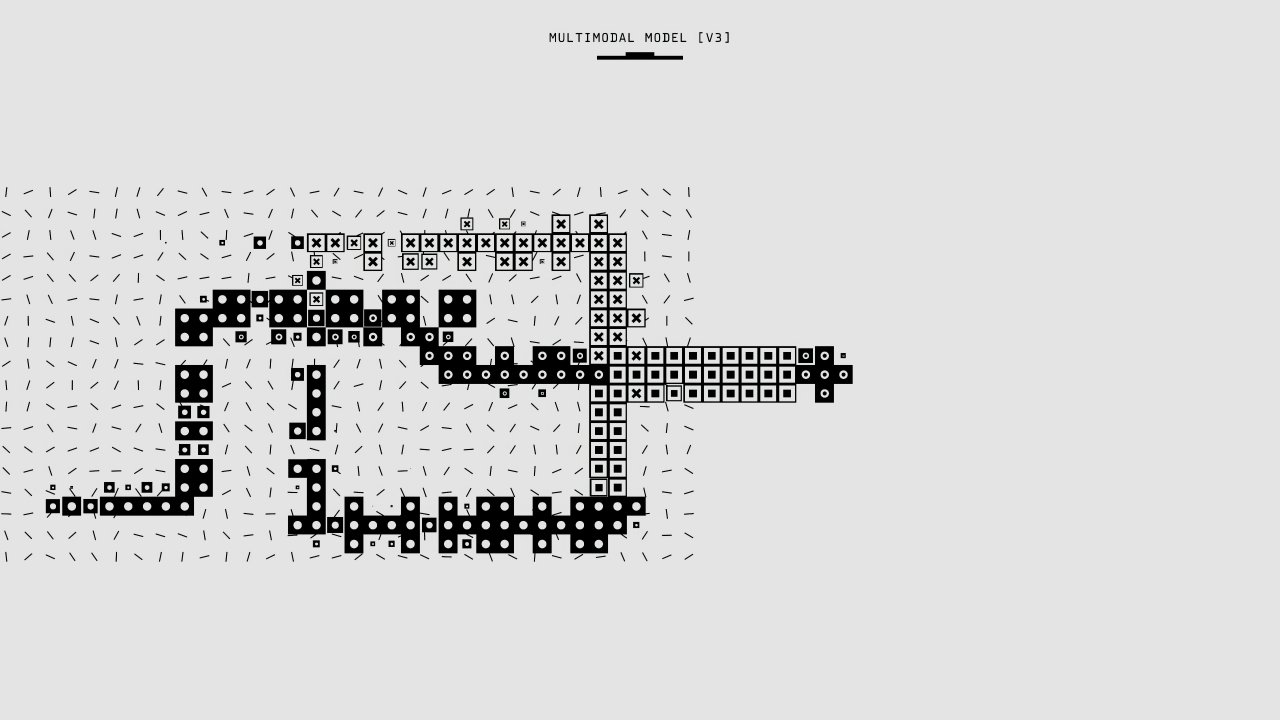







May 12, 2025

Liz Elfman
Content Marketing Director

The complexity and volume of information have outpaced traditional data management and governance tools. As organizations strive to make sense of sprawling data assets, knowledge graphs have emerged as a game-changing foundation for modern data catalogs.
A knowledge graph is a structured, interconnected representation of data entities and their relationships. Unlike rigid relational databases, knowledge graphs model information as a network of nodes (entities) and edges (relationships), capturing context, lineage, and meaning across the data landscape. This semantic approach enables both humans and machines to interpret, query, and reason about data in ways that were previously impossible.
1. Context-rich discovery
Traditional data catalogs list assets but often lack the context necessary for true understanding. Knowledge graphs transform catalogs into dynamic maps, revealing not just what data exists, but how it connects-across business terms, processes, systems, and people. This interconnectedness empowers users to discover data assets, trace their lineage, and understand their relevance in real time.
2. Flexible integration
As organizations onboard new data sources and adapt to evolving business needs, knowledge graphs offer unmatched flexibility. Their schema-less, extensible nature allows for seamless integration of new concepts and relationships without costly infrastructure change. Whether it’s structured databases, unstructured documents, or APIs, knowledge graphs unify disparate sources into a coherent, queryable model.
3. Enhanced compliance
Effective governance requires visibility into where data resides, how it flows, and who accesses it. Knowledge graphs excel here by mapping data entities to systems, policies, and users, making it easy to enforce rules, track lineage, and demonstrate compliance with regulations like GDPR or HIPAA. For example, a knowledge graph can instantly show all locations where personally identifiable information (PII) is stored, which applications use it, and which privacy policies apply.
4. Improved trust
By explicitly modeling relationships and dependencies, knowledge graphs help identify inconsistencies, redundancies, and data quality issues. Metadata-such as ownership, definitions, and classifications-is embedded directly in the graph, enabling dynamic updates and real-time visibility. This transparency builds trust and supports data stewardship across the organization.
5. Accelerated AI readiness
Knowledge graphs bridge the gap between raw data and actionable insights. They provide the contextual foundation required for advanced analytics, machine learning, and AI explainability-enabling organizations to uncover hidden patterns, automate reasoning, and support decision-making at scale.
Supply chain optimization: Knowledge graphs model complex supplier relationships and logistics, enabling real-time bottleneck detection and risk mitigation.
Regulatory compliance: Automated lineage tracking and policy mapping streamline audits and support “right to be forgotten” requests under GDPR.
Customer 360: Integrating CRM, support, and product data reveals a holistic view of customer interactions, driving personalized experiences and targeted marketing.
Knowledge graphs are not just another trend-they represent a fundamental shift in how organizations manage, govern, and extract value from their data. By transforming static inventories into living, interconnected knowledge networks, they enable smarter discovery, robust governance, and AI-ready data ecosystems.
For data catalog and governance platforms, embracing knowledge graphs is the key to unlocking the full potential of enterprise data.

The complexity and volume of information have outpaced traditional data management and governance tools. As organizations strive to make sense of sprawling data assets, knowledge graphs have emerged as a game-changing foundation for modern data catalogs.
A knowledge graph is a structured, interconnected representation of data entities and their relationships. Unlike rigid relational databases, knowledge graphs model information as a network of nodes (entities) and edges (relationships), capturing context, lineage, and meaning across the data landscape. This semantic approach enables both humans and machines to interpret, query, and reason about data in ways that were previously impossible.
1. Context-rich discovery
Traditional data catalogs list assets but often lack the context necessary for true understanding. Knowledge graphs transform catalogs into dynamic maps, revealing not just what data exists, but how it connects-across business terms, processes, systems, and people. This interconnectedness empowers users to discover data assets, trace their lineage, and understand their relevance in real time.
2. Flexible integration
As organizations onboard new data sources and adapt to evolving business needs, knowledge graphs offer unmatched flexibility. Their schema-less, extensible nature allows for seamless integration of new concepts and relationships without costly infrastructure change. Whether it’s structured databases, unstructured documents, or APIs, knowledge graphs unify disparate sources into a coherent, queryable model.
3. Enhanced compliance
Effective governance requires visibility into where data resides, how it flows, and who accesses it. Knowledge graphs excel here by mapping data entities to systems, policies, and users, making it easy to enforce rules, track lineage, and demonstrate compliance with regulations like GDPR or HIPAA. For example, a knowledge graph can instantly show all locations where personally identifiable information (PII) is stored, which applications use it, and which privacy policies apply.
4. Improved trust
By explicitly modeling relationships and dependencies, knowledge graphs help identify inconsistencies, redundancies, and data quality issues. Metadata-such as ownership, definitions, and classifications-is embedded directly in the graph, enabling dynamic updates and real-time visibility. This transparency builds trust and supports data stewardship across the organization.
5. Accelerated AI readiness
Knowledge graphs bridge the gap between raw data and actionable insights. They provide the contextual foundation required for advanced analytics, machine learning, and AI explainability-enabling organizations to uncover hidden patterns, automate reasoning, and support decision-making at scale.
Supply chain optimization: Knowledge graphs model complex supplier relationships and logistics, enabling real-time bottleneck detection and risk mitigation.
Regulatory compliance: Automated lineage tracking and policy mapping streamline audits and support “right to be forgotten” requests under GDPR.
Customer 360: Integrating CRM, support, and product data reveals a holistic view of customer interactions, driving personalized experiences and targeted marketing.
Knowledge graphs are not just another trend-they represent a fundamental shift in how organizations manage, govern, and extract value from their data. By transforming static inventories into living, interconnected knowledge networks, they enable smarter discovery, robust governance, and AI-ready data ecosystems.
For data catalog and governance platforms, embracing knowledge graphs is the key to unlocking the full potential of enterprise data.